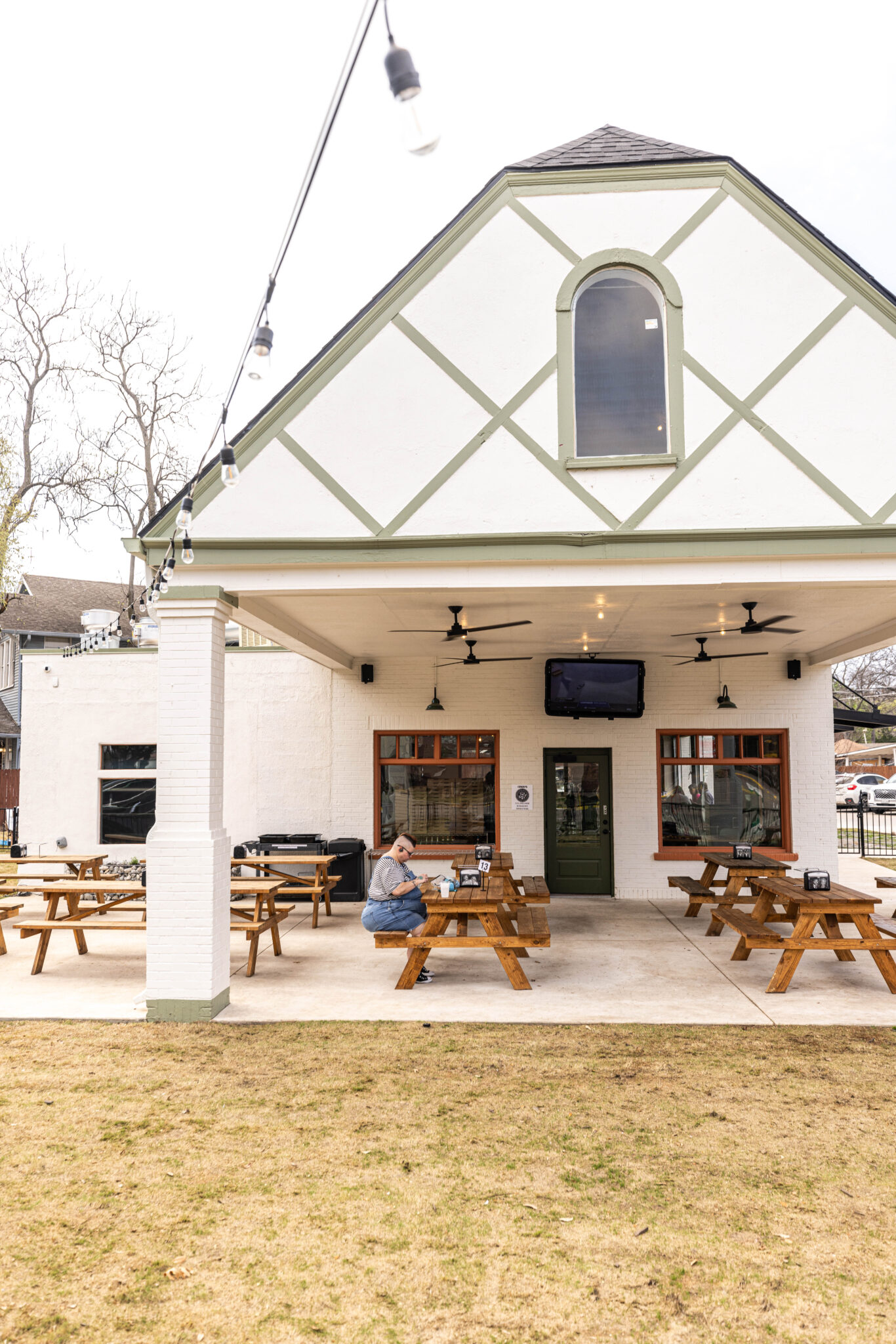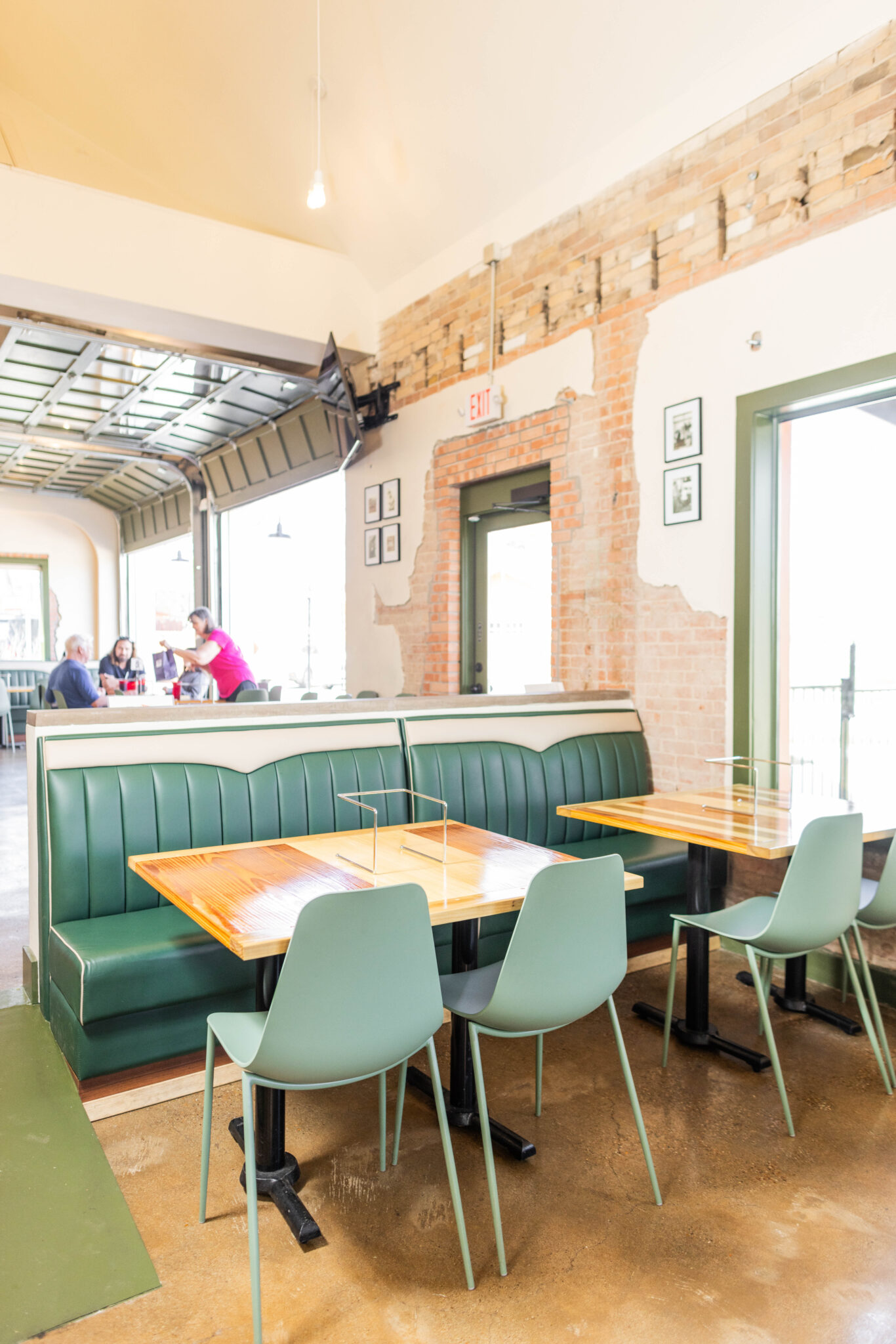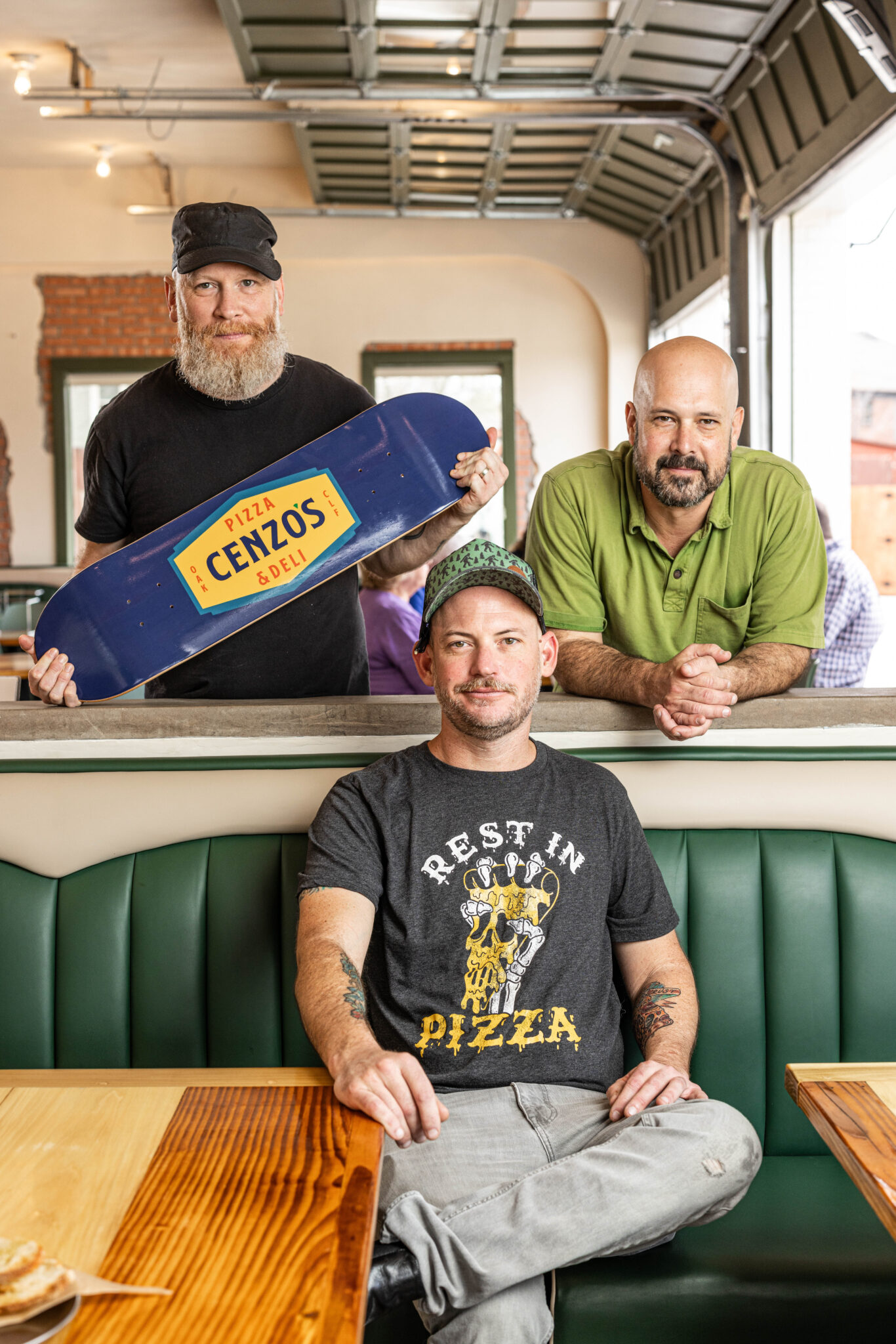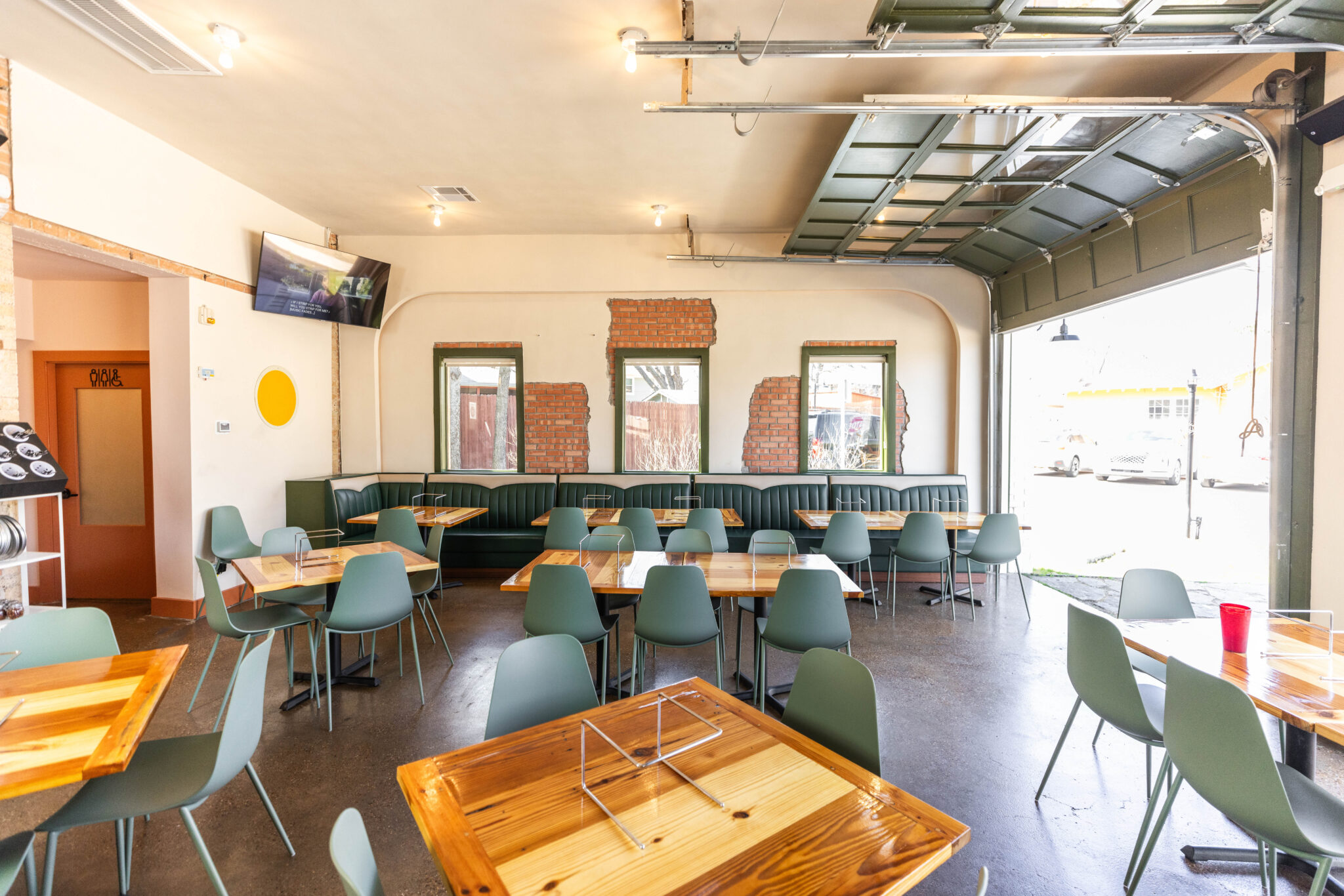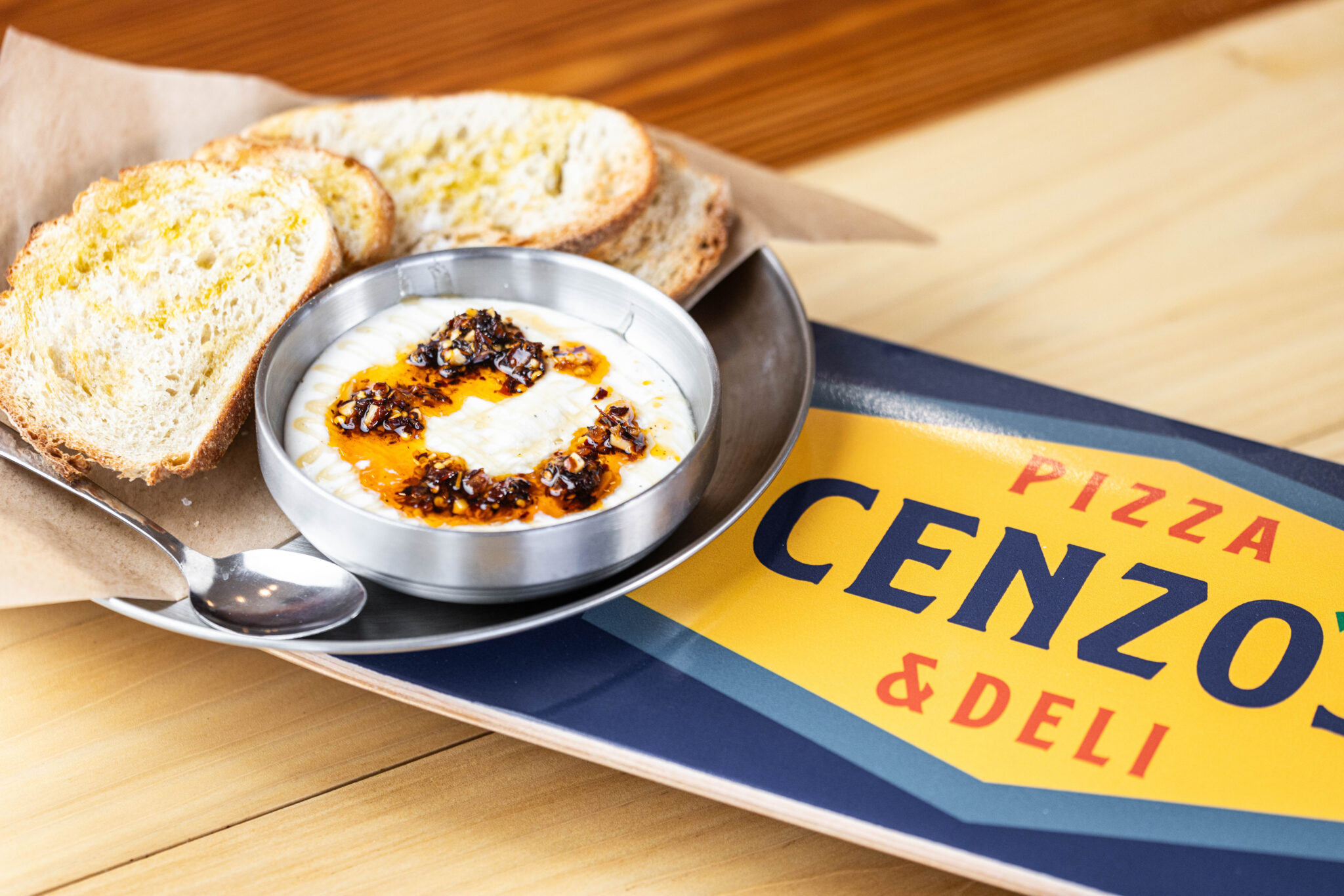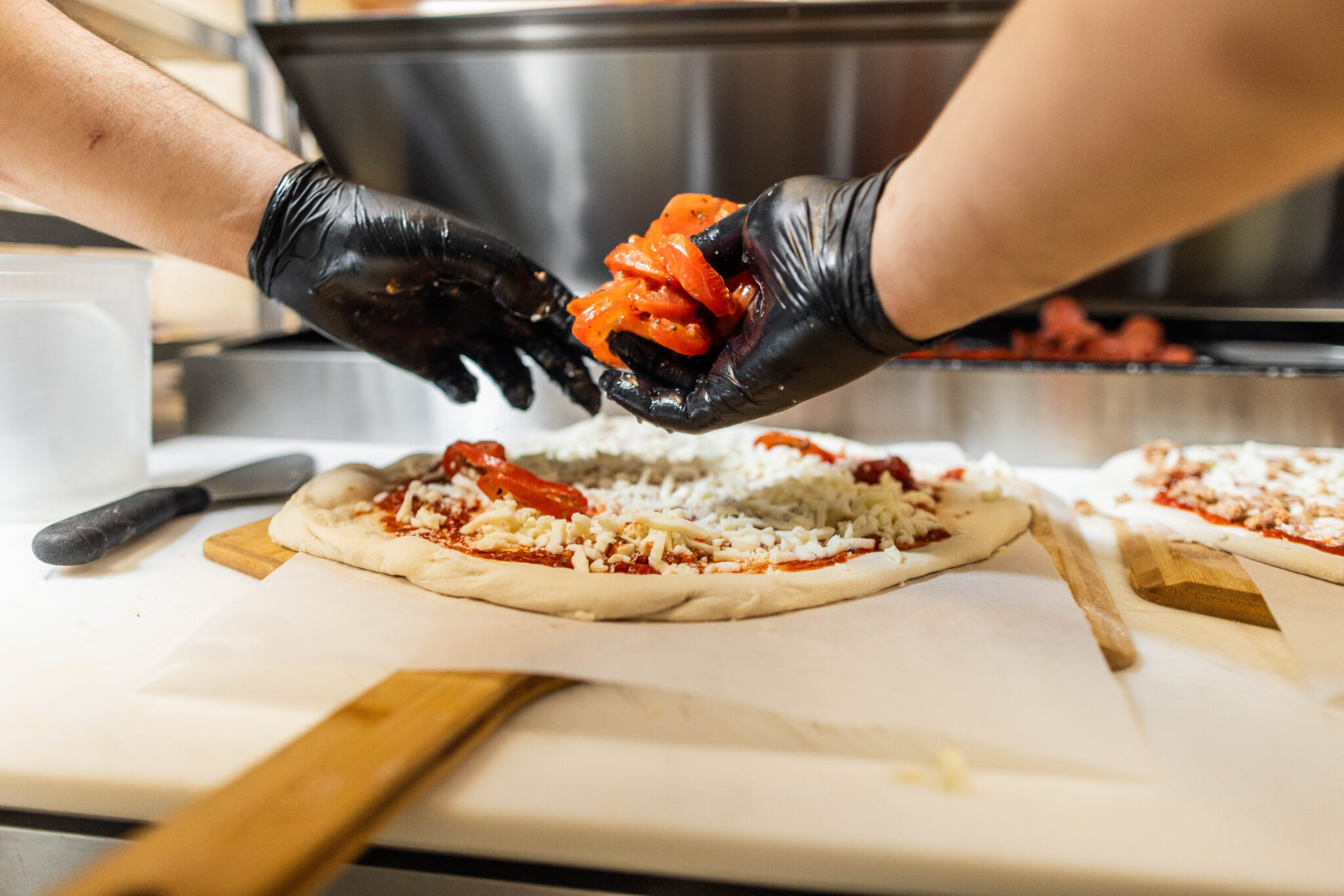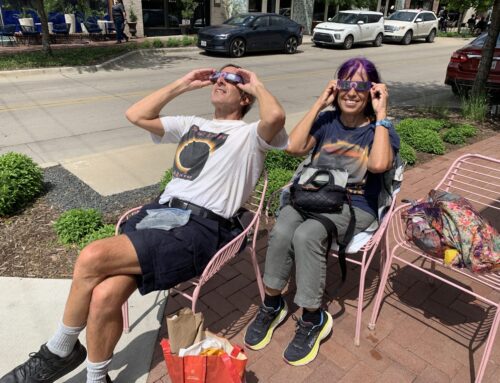Photography by Kathy Tran
1700 W. 10th Street pre-dates the Winnetka Heights Historic District by at least 50 years.
No one is totally sure when the building was built, but permits filed in 1933 are the first record of what was originally a neighborhood filling station. Over time, the building went from filling station to taqueria, and from taqueria to laundromat.
At some point, the building’s interior walls were painted neon green and the surrounding neighborhood ratified a historic district ordinance.
And so, when chef Chad Dolezal and his business partner Vinnie Sherman bought the building in 2022, they didn’t just inherit neon green walls and the wear and tear that comes with any century-old building. They also inherited all 50 pages of the Winnetka Heights Historic District ordinance governing exactly what changes can be made.
“Putting a restaurant in a historic building is kind of like putting together a puzzle,” Chad says. “We had the landmark commission basically say we have three front yards here …. And it was like, okay, this is going to be interesting.”
After 18 months of renovations, it’s a brightly lit family joint with the pulse of an early ‘90s Deep Ellum grunge-rock show. Chad is the leading man, full of charisma, bearded, with a fork tattooed on his forearm. And he is so into it.
“I don’t think it’s got to be so serious,” he says of the restaurant industry.
He did the chef-driven, highly-acclaimed thing with his Austin eatery Hightower, which applied French cooking techniques to old-school San Antonio-style food. It closed in 2019 after being named one of the best restaurants in town by just about everyone.
Now a father of two, he likes good food served without pretense. He likes places families can relax and enjoy. And he likes Oak Cliff. A lot.
“I’ll sit out (in the yard) and watch people. I mean, just like Paul, who lives across the street, I didn’t know him before this place and now we’re friends,” Chad, who also lives in Winnetka Heights, says. “We’re gonna have his daughter’s rehearsal dinner here. And I’m just like, that’s awesome.”
When they first got the building, a classic Tudor Revival, there was nothing they wanted to add to the exterior, Chad says. But they did want to enhance it. The porch, created by the building’s large awning, was wrapped in vinyl. Not realizing it was bolted in, Chad climbed onto the building’s roof and “almost died” on day one while attempting to rip it out.
The neighborhood architecture firm DSGN Associates worked on the building’s renovation. So did Chad’s wife, Joy Dolezal, who has a background in interior design and architecture.
“We already loved the building and it already had those unique architectural elements,” Joy says. “We really just tried to come in and sort of strip it back and highlight those details.”
They tore down the interior wood paneling and grid ceiling, which obscured the building’s pitched roof. Patches of paint and plaster scatter the walls up to about 12 feet high, marking where the makeshift ceiling had been installed.
Around that 12-foot-tall mark, slats in the brick show where wooden rafters sat. The wood was repurposed into the restaurant’s tables.
When the grid ceiling came down, Chad found four “old looking” garage doors rolled up into the rafters. Talking with the building’s prior owner, he confirmed the doors had been hidden from view since at least the ‘70s.
“So we found a guy who repaired antique doors and windows and we’re like, ‘Hey, we have what we think are very old garage doors. But I work in restaurants, so I really have no idea what I’m talking about,’” Chad says. “He came in and looked and he was like, ‘This is at least from the ‘40s.’ They were the original garage doors.”
They were able to piece together the hardware to create the two garage doors attached to the pizzeria now.
Joy, inspired by the curved doorway that leads into the kitchen, turned the shape into a motif throughout the restaurant’s design.
“We tried to kind of keep that in the concept with the curved bar, and the curved backsplash on the bar,” Joy says. “And it also plays on the pizza shape.”
Framed photos of every rocker and TV star from Chad’s childhood decorate the walls. A Miami Vice-era Tom Selleck and Philip Michael Thomas are posted around a sign that reads “celebrities who haven’t been to Cenzo’s, but would probably like it.”
The cushy green booths match the restaurant’s base trim, doors and window frame color, and were inspired by the Pizza Hut booths of Chad’s childhood.
“When I was a kid, Pizza Hut was like a real restaurant. Like it wasn’t a fast food place … (The Pizza Hut) booths were rad,” Chad says. “We thought it would be kind of a cool nod to the building and feels like, nostalgia-wise, what it felt like to be in like one of those neighborhood spots.”
Because, at the end of the day, Cenzo’s is meant to be a neighborhood spot.
Eleven pizza varieties are named for 11 North-South oriented streets in Winnetka Heights. The only street missing is Hollywood; the eponymous pizza was nixed just days before the Cenzo’s opening. Chad swears his next pie will be named after the street.
He did the naming with a Google Map and a draft of the menu side by side.
“No one can get mad at me because this is as diplomatic as I can make it. I’ve had so many people say, ‘Where’s this or where’s that?’” he says. “I was like, ‘If you have a problem, it’s with the City of Dallas and how they lay out the streets and Google Maps.’”
The restaurant may not be a chef-driven concept, but Chad “loves everything” Jason Smith, an “even-keeled” head chef with an expertise in pizza, brings to the table.
Smith’s “meatballs are insane,” leading the Waverly Pizza and the Meatball Sub to be two of the restaurant’s best sellers. One of Chad’s “favorite things in the entire world” is a pistachio butter made in-house, although you won’t see that mentioned on the menu.
“There are all these little things that (Jason) does that we intentionally don’t write,” Chad says. “We try not to beat people over the head with the technique we do.”
When doors officially opened last December, the restaurant completely sold out of food by 7:15 p.m. It was “crushing in the best way,” Chad says. It led them to cut back the menu slightly, but they say it’s more deliberate this way.
The restaurant playlist is the soundtrack for the punk-rock but unserious dining experience. Chad curated it himself, and refuses to add songs released outside of 1972 to 1996.
Even the name Cenzo’s has become a North Star, representing a fictional Oak Cliff character who reminds us of the good old days. A framed ‘70s era photo of a large-haired man found at a church antique sale became the mascot for Cenzo’s, after Chad confirmed on various Facebook pages that no one actually knew the guy.
“To us, he is like the guy we wanted to know in Oak Cliff. He’s the guy who’s been here forever and he knows everybody. He loves pizza and sandwiches,” Chad says. “In my mind, he left Oak Cliff for a little bit in the ‘70s and ‘80s and traveled and went to a lot of cool cities and met a lot of famous people. And then came back here and started this.”

